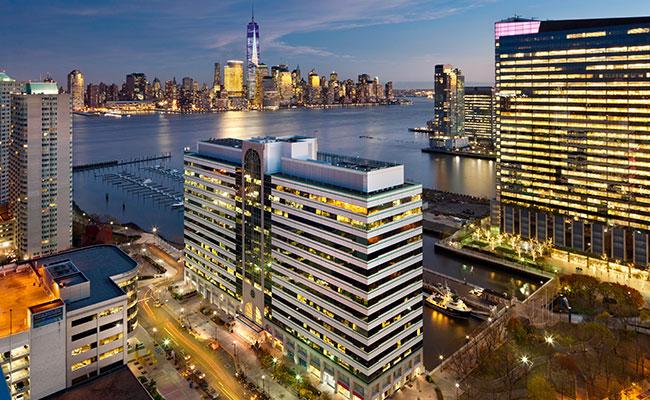Sustainable Design: Strengthening Urban Environments After Superstorm Sandy
Emphasizing smarter lifecycle designs to ensure our clients’ projects will thrive and endure

Increased climate variability and surging population growth are placing greater demands on limited resources such as water, energy, and physical space. Our teams are considering how buildings and infrastructure can be designed to more effectively cope with these stresses and perform well into the future. Facilities need to be built not only to operate in greater harmony with nature but also to withstand the forces it may unleash.
Tetra Tech understands the value of resiliency planning and sustainable design in addressing emerging risks associated with a changing world. We develop unique solutions to some of the toughest problems—using both cutting-edge technologies and commonsense approaches.
As conceptual frameworks, resilience and sustainability increasingly guide decisions in the planning, design, and engineering of our projects. Resiliency emphasizes robustness and the ability to recover, while sustainability considers measures of environmental impact and resource conservation. Both concepts share common end goals in contributing to society’s capacity to thrive in a meaningful way. In this Sustainable Design article series, we highlight Tetra Tech projects that represent some of the industry’s very best examples of resiliency planning and sustainable design.
Resiliency planning
Increasing threats associated with storm surges, sea level rise, and higher intensity weather underscore the importance of resiliency strategies for addressing climate-related risks. Tetra Tech is working with clients on adaptation measures to reduce risks to vulnerable communities.
Strengthening urban environments after Superstorm Sandy
Sometimes communities do not conduct resilience planning until after disaster strikes. The severe damage inflicted by Superstorm Sandy on the U.S. eastern seaboard, and especially New York and New Jersey, underscored the need for urban communities to incorporate more resiliency against extreme weather events into their planning. In New York City, Sandy’s storm surge caused massive flooding of streets, tunnels, and subway lines that resulted in a loss of power and severe damage to buildings and infrastructure. The Port Authority of New York and New Jersey estimated its total infrastructure losses at $2.2 billion.
Following the storm, Cosentini, A Tetra Tech Company, assisted the New York City Housing Authority and other entities to deliver recovery solutions, disaster assessment, and long-term resiliency planning and implementation for several storm-damaged buildings and infrastructure in Manhattan and Jersey City. Projects included Waterside Plaza, the United Nations International School, Peter Cooper Village, and large commercial and mixed-use buildings on Wall Street.
“When the storm surge hit, floodwater poured into basements, devastating buildings,” said Douglas Mass, PE, LEED AP, president of Cosentini. “Since most of a building’s mechanical, electrical, and plumbing (MEP) equipment is traditionally located below grade, this infrastructure was severely damaged or completely wiped out. Electrical switchgear was coated with salt water and fuel oil tanks were flipped over, spilling hazardous materials.”
In floodproofing buildings, Tetra Tech redesigned building systems to move critical infrastructure and vulnerable MEP equipment—such as electrical switchgear, fuel pumps, fire pumps, and fire alarm systems—to higher floors, raising them above Federal Emergency Management Agency flood levels. These relocations were subsequently incorporated into building codes.
“Long-term resiliency is about planning for extreme future events and creating an environment where buildings are safe for people to work and to live,” Douglas said. “It is about ensuring critical facilities such as hospitals and fire and police stations can stay operational, have reliable power, and be able to communicate. We have studied how to maintain reliable water flow to buildings and conducted wastewater system retrofits—replacing pumpless stations with resilient and floodproof equipment to keep treatment operations running in the event of flooding.”
Planning efforts to make urban environments more resilient should consider both the physical and technological aspects of an emergency response plan, said Onorius Vaidean, director of information technologies with Tetra Tech. “With emergency response communication systems, we add redundancies and diverse designs to ensure there is always a backup and not one single point of failure that could take an entire system down,” Onorius said.
A commitment to our future
A city is the sum of its parts—buildings, communities, coastlines—and efforts to enhance long-term resilience and sustainability must reach across all of them. Tetra Tech’s community resiliency specialists and global sustainable infrastructure teams are demonstrating what can be achieved through collaboration, creativity, and an unwavering dedication to the highest principles in planning, design, and engineering. By leading in projects that advance resiliency and sustainability, we can continue to deliver the most effective solutions to our clients and help ensure a vibrant and enduring future

